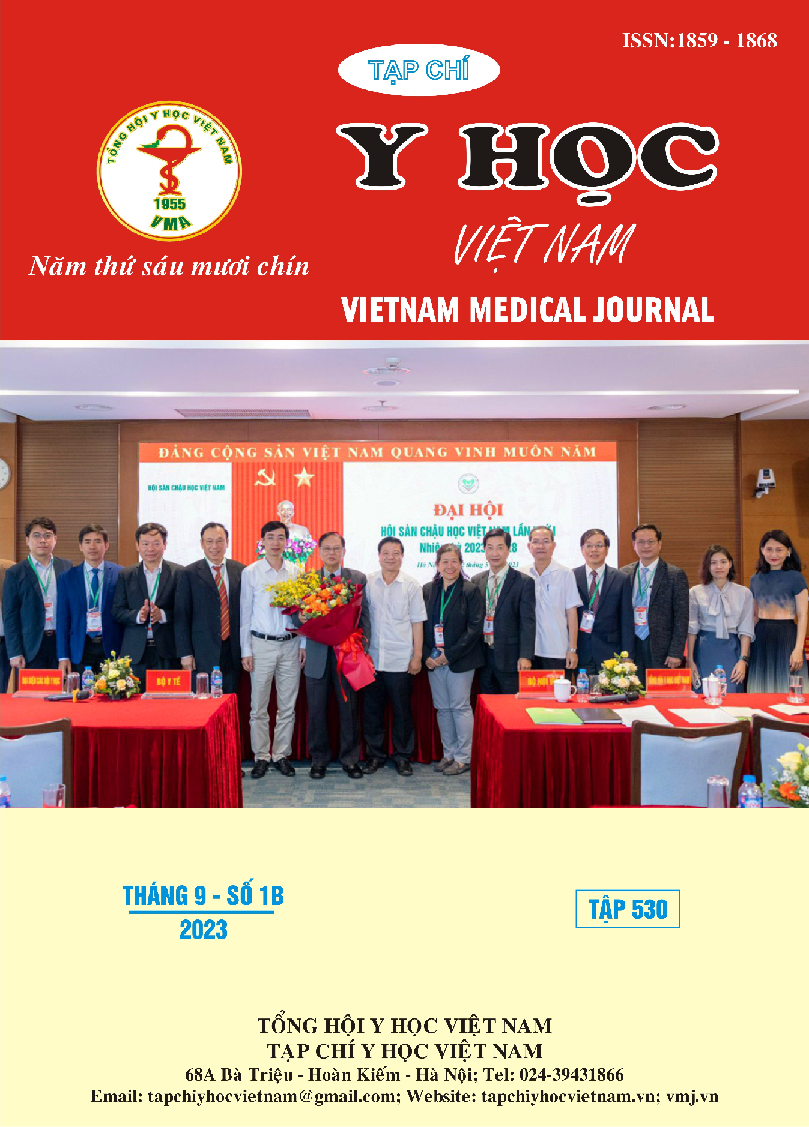TÌNH HÌNH ĐỀ KHÁNG KHÁNG SINH VÀ ĐÁNH GIÁ VIỆC QUẢN LÝ SỬ DỤNG KHÁNG SINH Ở BỆNH NHÂN NHIỄM KHUẨN HUYẾT TẠI BỆNH VIỆN ĐA KHOA CÀ MAU
Nội dung chính của bài viết
Tóm tắt
Đặt vấn đề: Các chủng vi khuẩn đề kháng kháng sinh (một số lớn trong đó có khả năng đa đề kháng) xuất hiện gần đây là nguyên nhân gây tử vong do nhiễm trùng hàng đầu trên thế giới. Kết quả nghiên cứu nhằm giúp bệnh viện có biện pháp quản lý, nâng cao hiệu quả sử dụng kháng sinh và kiểm soát nhiễm khuẩn. Mục tiêu: Khảo sát tỷ lệ đề kháng kháng sinh của từng nhóm bệnh nhiễm khuẩn huyết và kết quả dùng kháng sinh theo kinh nghiệm so với kháng sinh đồ trong điều trị nhiễm khuẩn huyết tại Bệnh viện Đa khoa Cà Mau năm 2022-2023. Đối tượng và phương pháp nghiên cứu: Mô tả cắt ngang, hồi cứu trên 281 bệnh án nội trú của bệnh nhân được chẩn đoán xác định nhiễm khuẩn huyết tại Bệnh viện Đa khoa Cà Mau. Kết quả: Tỉ lệ vi khuẩn chiếm đa số là Staphylococcus aureus (19,9%), Staphylococcus hominis (17,4%), Burkholdia cepacian (15,7%), Escherichia coli (15,3%) và còn lại là các vi khuẩn khác. Tỉ lệ vi khuẩn nhạy với kháng sinh là 63,0%, đa kháng kháng sinh là 52,7% và kháng mở rộng là 28,1%. Tỉ lệ phù hợp giữa kết quả sử dụng kháng sinh theo kinh nghiệm với kết quả kháng sinh đồ là 67,3%. Kết luận: Tỉ lệ vi khuẩn đa kháng kháng sinh là 52,7% và kháng mở rộng là 28,1%. Tỉ lệ phù hợp giữa kết quả sử dụng kháng sinh theo kinh nghiệm với kết quả kháng sinh đồ là 67,3%.
Chi tiết bài viết
Từ khóa
Đề kháng kháng sinh, vi khuẩn, nhiễm khuẩn huyết, kháng sinh đồ.
Tài liệu tham khảo
2. Nguyễn Phương Dung (2022), Đánh giá hiệu quả của chương trình quản lý sử dụng kháng sinh trong điều trị nhiễm khuẩn huyết tại Bệnh viện Thống Nhất, Tạp chí Y học Việt Nam, tập 510 (2), trang 127-133.
3. Đỗ Đức Dũng (2018), Nghiên cứu đặc điểm lâm sàng, cận lâm sàng, vi sinh vật và tình hình kháng kháng sinh của bệnh nhân nhiễm khuẩn huyết tại khoa hồi sức tích cực Bệnh viện Bạch Mai, Luận văn chuyên khoa cấp II, Trường Đại học Y Hà Nội.
4. Cao Minh Nga (2009), Các vi khuẩn gây nhiễm khuẩn huyết và sự đề kháng kháng sinh, Tạp chí Y học TP. Hồ Chí Minh, 13(1), tr. 256-261.
5. Trần Ngọc (2018), Phân tích tình hình sử dụng kháng sinh trong điều trị nhiễm khuẩn bệnh viện do vi khuẩn gram âm tại khoa Hồi sức tích cực – chống độc, bệnh viện đa khoa Tây Ninh, Luận văn Thạc sĩ Dược học, Trường Đại học Dược Hà Nội.
6. Võ Thị Kim Nhi (2022), Đặc điểm các tác nhân gây nhiễm trùng huyết và sự đề kháng kháng sinh tại Bệnh viện Đa khoa Trung ương Cần Thơ, Tạp chí Y học Việt Nam, 51, trang 96-102.
7. Lê Thị Kim Nhung (2012), Khảo sát tình hình nhiễm khuẩn bệnh viện tại bệnh viện Thống Nhất từ 5/2011-11/2011, Tạp chí Y học Thành phố Hồ Chí Minh, 16(1), trang 195-198.
8. Tôn Thanh Trà, Phạm Thị Ngọc Thảo (2015), Tỷ lệ sử dụng kháng sinh ban đầu thích hợp và tỷ lệ tuân thủ Surviving Sepsis Campaign 2012 ở bệnh nhân nhiễm khuẩn huyết, sốc nhiễm khuẩn tại Khoa Cấp cứu Bệnh viện Chợ Rẫy, Y Học TP. Hồ Chí Minh, 19(1), tr. 421-425.
9. Riu M, Chiarello P, Terradas R, et al (2016), Cost Attributable to Nosocomial Bacteremia. Analysis According to Microorganism and Antimicrobial Sensitivity in a University Hospital in Barcelona, PLOS ONE, 11(4), e0153076.
10. Shannon A. N, M athew R.p, Cheri G et al (2016), Vital Signs: Epidemiology o f Sepsis: Prevalence of Health Care Factors and Opportunities for Prevention, MMWR Early Release, 65(33), pp. 864-869.


